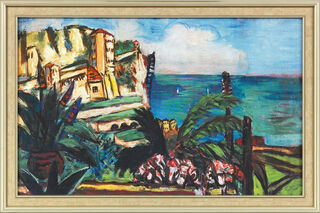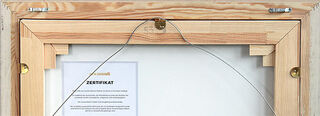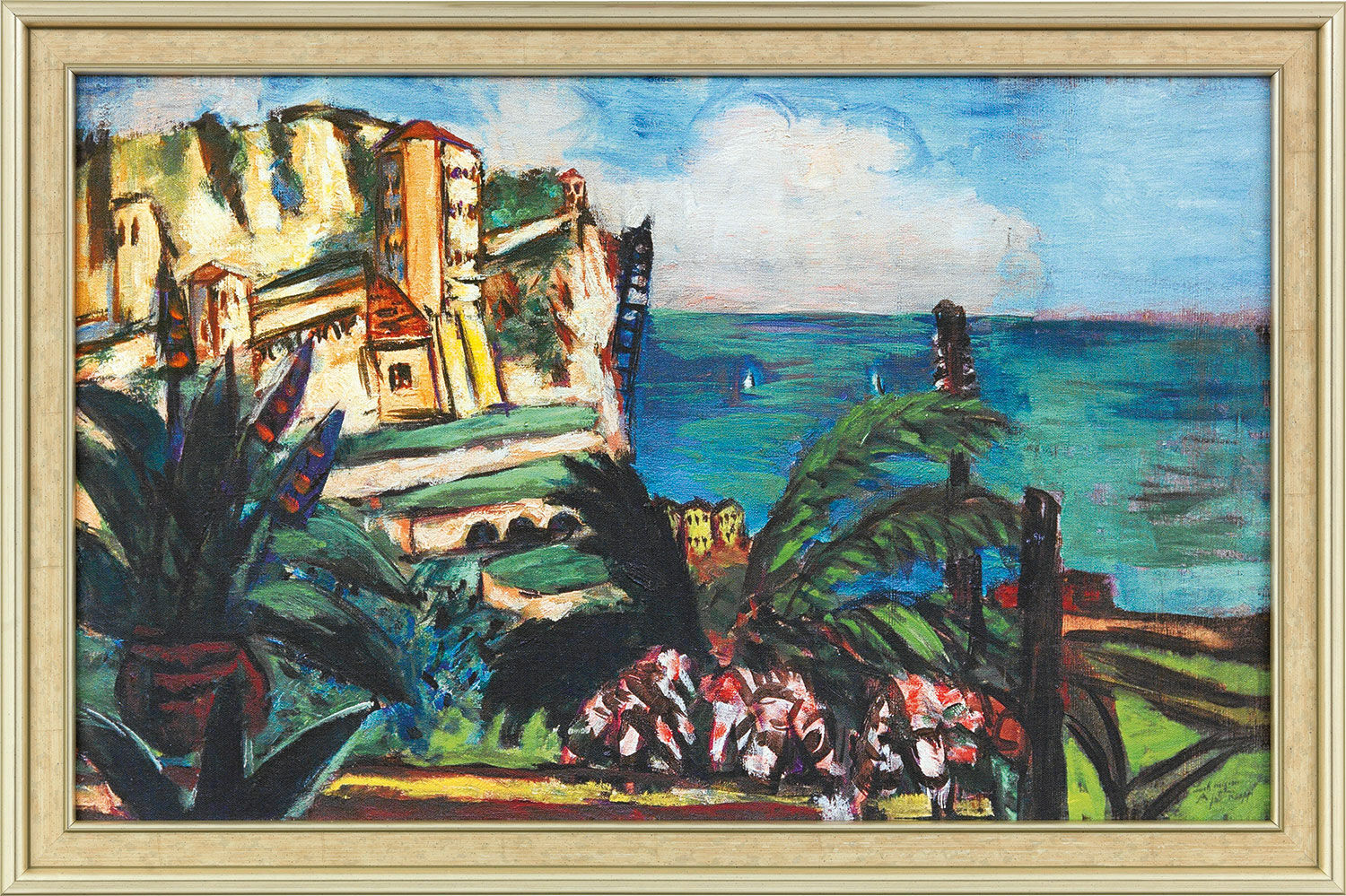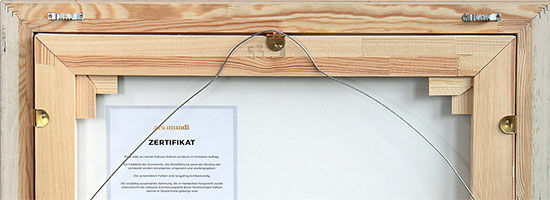Picture "Riviera Landscape with Rocks" (1942), framed


Picture "Riviera Landscape with Rocks" (1942), framed
Quick info
ars mundi Exclusive Edition | limited, 980 copies | numbered | certificate | reproduction, Giclée print on canvas | on stretcher frame | framed | size 53,5 x 80 cm (h/w)
Video
Detailed description
Picture "Riviera Landscape with Rocks" (1942), framed
Original: 1942, oil on canvas, 55.5 x 96 cm, private collection.
Edition transferred directly onto artist's canvas using the Fine Art Giclée process and stretched onto a stretcher frame. Limited edition of 980 copies, numbered, with certificate. Framed in handmade, beige solid wood frame. Size 53.5 x 80 cm (h/w). ars mundi Exclusive Edition.
Frame configurator
Customised picture frame

Frame configurator
Customised picture frame






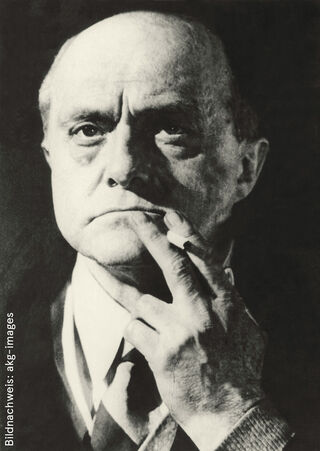
About Max Beckmann
1884-1950
Max Beckmann, born in Leipzig, Germany, in 1884, seems like a solitary figure in the avant-garde of his time. While the emerging modern movement gradually led painting programmatically towards complete non-objectivity, Beckmann aligned himself with the art-historical tradition and consciously linked his art to the painting of the late 19th century.
A recurring motif in his works is the sea, which he once described in an interview as his "old friend". In his early works, he portrays it as a mysteriously vital space of existential experience, while during the National Socialism era, it transforms into a motif of freedom, departure, and escape.
In 1910, Beckmann was elected as a board member of the Berlin Secession, the youngest ever to achieve this status, and later his art was declared "degenerate" by the Nazi regime. Today, Beckmann is considered one of the most significant representatives of German Expressionism. His works are exhibited in many major modern art museums and sell for top prices at auctions.
Graphic or sculpture edition that was initiated by ars mundi and is available only at ars mundi or at distribution partners licensed by ars mundi.
Artistic movement that replaced Impressionism in the early 20th century.
Expressionism is the German form of the art revolution in painting, graphic art and sculpture, which found its precursor in the works of Paul Cézanne, Vincent van Gogh and Paul Gauguin in the late 19th century. The Expressionists attempted to advance to the primal elements of painting. With vibrant, unbroken colours in large areas and with the emphasis on the line and the resulting targeted suggestive expressiveness, they fought against the artistic taste established by the bourgeoisie.
The most important representatives of Expressionism were the founders of "Die Brücke" (The Bridge): Ernst Ludwig Kirchner, Erich Heckel, Karl Schmidt-Rottluff, Max Pechstein, Otto Mueller and Franz Marc, August Macke and others.
Masters of Viennese Expressionism are Egon Schiele and Oskar Kokoschka. Among the sculptors, Ernst Barlach is the most famous.
Fauvism is the French form of Expressionism.
Giclée = derived from the French verb gicler "to squirt, spurt".
The giclée method is a digital printing process. It is a high-resolution, large-format printout on an inkjet printer with special different-coloured dye- or pigment-based inks (usually six to twelve). The colours are fade-proof, i.e. resistant to harmful UV light. They have a high richness of nuance, contrast and saturation.
The giclée process is suitable for art canvases, handmade and watercolour paper as well as for silk.

